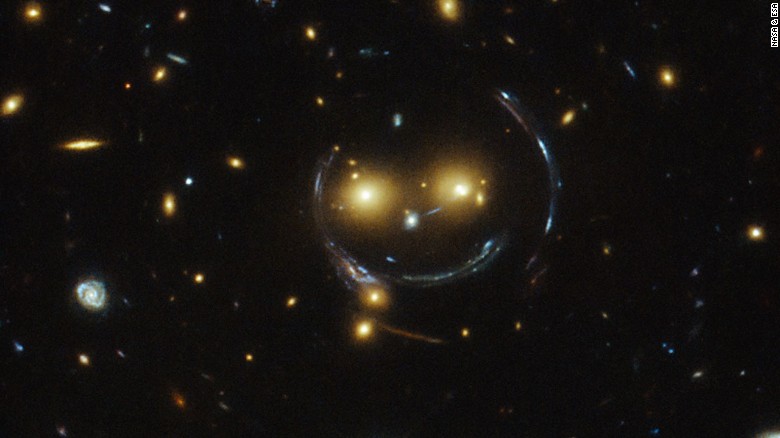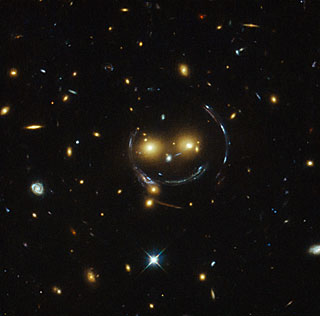The mathematical probability that man would find a way to instill his will on others has been long established. If you were forced to bet one way or another which one would you choose, a hands off policy or an interference policy? I'll bet the farm on the interference policy (for the good of the aliens of course). We may be explorers but we are also conquerors!!Finding intelligent life will be a disaster as you know man being stupid will stick his nose where it does not belong and want to change them in to democrats and republicans, Christians and Muslims and we will do it all over again.
We would be better off if we found a planet with no intelligent life and no dinosaurs.
The Aliens already have. They call it Dirball. We call it Earth.
This is kind of sad that so many people hate humanity. No wonder they don't believe it can do great things and explore. All the faith of the 50's and 60's is gone.
Navigation
Install the app
How to install the app on iOS
Follow along with the video below to see how to install our site as a web app on your home screen.
Note: This feature may not be available in some browsers.
More options
You are using an out of date browser. It may not display this or other websites correctly.
You should upgrade or use an alternative browser.
You should upgrade or use an alternative browser.
Space news and Exploration II
- Thread starter ScienceRocks
- Start date
Boing and spaceX got a 6.8 billion contract, and will have the first manned space flight by 2017, perhaps they will get a much bigger contract once they have show success and cost reduction in doing this. Anotherwords doing it cheaper than NASA. If that's the case boeing and SpaceX could go on a hiring binge.
This would be my plan from soonest to latest -
1.) Make it free to take Math, all sciences, physics, space, and, space engineering classes ASAP. Congress should have zero issue funding that, because it's much cheaper than Obama's free 2 year tuition program.
2.) Give Boeing and Space X tens of billions every year in contracts. I believe if we can spend that much on alternative energy that doesn't even create jobs that last, better give it to these private businesses that we know will last and employ as many of these college graduates in math, science and space as they can potentially hundreds of thousands of jobs. It will make math and science important again and students will want to do it.
3.) Build a US Space stations right now. This should be NASA"s #1 priority now that space x and Boeing took a huge load off of them. We have to with the russians denying us access to the international station by 2020. Plus their is so outdated and there rockets are blowing up, and with our top private companies like Boeing creating the next big capsul
4.) Plan missions to the moon to start planning a port to be built there.
6.) After the us space station is built expand responsibilities to Boeing and Space X to build this port on the moon since it will be cheaper done by a private company. That means increase their yearly budget again. this is where space engineers will be needed many of them to expedite this.
7.) Build a super computer to put on the moon at the port..
8.) while all of this is going on NASA should be focused on sending information gathering rovers to Mars prior to any manned space travel to that planet. According to NASA's budget request they are doing exactly that. I'm also happy they are building a newer better version of the hubble telescope, and newer high tech fleet of satelites.
9.) Lastly - Missions to mars.
How is it cheaper when private companies do it? Don't they have a profit motive? This isn't something that is going to give a company a financial ROI. Or maybe you think they'll give rides into space for a big fee?
Why do we need a corporation that will no doubt have an overpaid CEO, VP, other executives who don't know science but they make more than the scientists do?
How many scientists can you hire with that CEO money?
ScienceRocks
Democrat all the way!
- Thread starter
- Banned
- #463
The mathematical probability that man would find a way to instill his will on others has been long established. If you were forced to bet one way or another which one would you choose, a hands off policy or an interference policy? I'll bet the farm on the interference policy (for the good of the aliens of course). We may be explorers but we are also conquerors!!Finding intelligent life will be a disaster as you know man being stupid will stick his nose where it does not belong and want to change them in to democrats and republicans, Christians and Muslims and we will do it all over again.
We would be better off if we found a planet with no intelligent life and no dinosaurs.
The Aliens already have. They call it Dirball. We call it Earth.
This is kind of sad that so many people hate humanity. No wonder they don't believe it can do great things and explore. All the faith of the 50's and 60's is gone.
The reality of the universe is only the strong survive that are willing to do what it takes. If we're no longer willing to do what it takes. Will we survive the long term?
The mathematical probability that man would find a way to instill his will on others has been long established. If you were forced to bet one way or another which one would you choose, a hands off policy or an interference policy? I'll bet the farm on the interference policy (for the good of the aliens of course). We may be explorers but we are also conquerors!!Finding intelligent life will be a disaster as you know man being stupid will stick his nose where it does not belong and want to change them in to democrats and republicans, Christians and Muslims and we will do it all over again.
We would be better off if we found a planet with no intelligent life and no dinosaurs.
The Aliens already have. They call it Dirball. We call it Earth.
This is kind of sad that so many people hate humanity. No wonder they don't believe it can do great things and explore. All the faith of the 50's and 60's is gone.
We know that something always goes wrong when one people go invade another country. From Cortez to Columbus to Hitler to Bush. Columbus worked out well for us but not so well for the Mexicans and Indians. Bet they wish they had better border security back then.
So I hope there is no intelligent life on the planet we go to. Or I hope they are no more advanced than us humans were in the 9th century before guns were invented. We could easily rule them with our automatic weapons and explosive devises. But if they were crazy enough we'd have to have a lot of fire power to stop 50,000 men who were not afraid to die.
If we went and they already had weapons and armies and rulers, I would be afraid they would want to experiment on us the same way we wanted to on ET. Or how they enslaved us in Planet of the Apes just like we treat monkeys today. Hopefully all this planet has is unintelligent life.
What would we do if we found a planet with dinosaurs? I would say wipe them off one continent but leave them alone everywhere else.
ScienceRocks
Democrat all the way!
- Thread starter
- Banned
- #465
1502.02038 Planetary Candidates Observed by Kepler VI Planet Sample from Q1-Q16 47 Months
Planetary Candidates Observed by Kepler VI: Planet Sample from Q1-Q16 (47 Months)
We present the sixth catalog of Kepler candidate planets based on nearly 4 years of high precision photometry. This catalog builds on the legacy of previous catalogs released by the Kepler project and includes 1493 new Kepler Objects of Interest (KOIs) of which 554 are planet candidates, and 131 of these candidates have best fit radii <1.5 R_earth. This brings the total number of KOIs and planet candidates to 7305 and 4173 respectively. We suspect that many of these new candidates at the low signal-to-noise limit may be false alarms created by instrumental noise, and discuss our efforts to identify such objects. We re-evaluate all previously published KOIs with orbital periods of > 50 days to provide a consistently vetted sample that can be used to improve planet occurrence rate calculations. We discuss the performance of our planet detection algorithms, and the consistency of our vetting products. The full catalog is publicly available at the NASA Exoplanet Archive
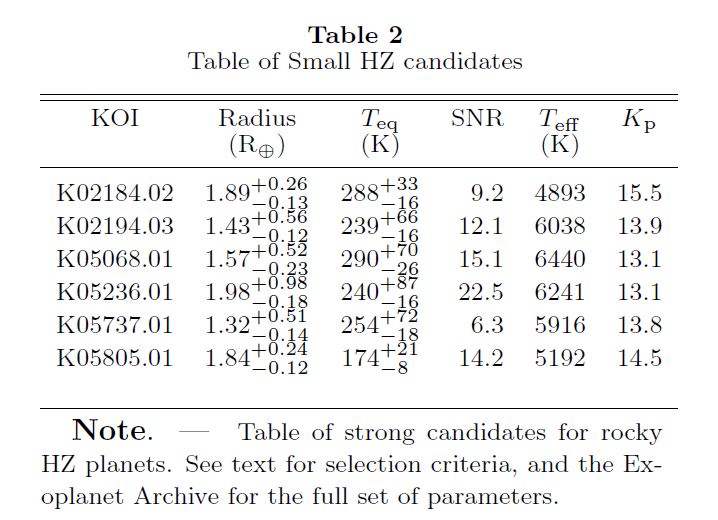
Planetary Candidates Observed by Kepler VI: Planet Sample from Q1-Q16 (47 Months)
We present the sixth catalog of Kepler candidate planets based on nearly 4 years of high precision photometry. This catalog builds on the legacy of previous catalogs released by the Kepler project and includes 1493 new Kepler Objects of Interest (KOIs) of which 554 are planet candidates, and 131 of these candidates have best fit radii <1.5 R_earth. This brings the total number of KOIs and planet candidates to 7305 and 4173 respectively. We suspect that many of these new candidates at the low signal-to-noise limit may be false alarms created by instrumental noise, and discuss our efforts to identify such objects. We re-evaluate all previously published KOIs with orbital periods of > 50 days to provide a consistently vetted sample that can be used to improve planet occurrence rate calculations. We discuss the performance of our planet detection algorithms, and the consistency of our vetting products. The full catalog is publicly available at the NASA Exoplanet Archive

ScienceRocks
Democrat all the way!
- Thread starter
- Banned
- #467
NASA solicits proposals for Precision Doppler Spectrometer at Kitt Peak
The spectrometer, funded by NASA, will be deployed on an existing telescope at Kitt Peak, the 3.5-meter WIYN telescope. The National Optical Astronomy Observatory (NOAO), which is funded by NSF, is a partner in the telescope and operates Kitt Peak
The new spectrometer will be a world-class precision radial velocity instrument, with a minimum velocity precision of better than 0.5 m/s (1 mph) and a goal of 0.1 m/s (0.2 mph).NASA has established an aggressive development schedule for the new spectrometer in order to make the instrument available for use by the astronomical community on a timescale relevant to the availability of data from the TESS mission (mid-FY18).
ScienceRocks
Democrat all the way!
- Thread starter
- Banned
- #468
http://spacenews.com/with-eye-on-spa...-rocket-stage/
The French space agency, CNES, on Jan. 5 said it has begun a small technology research program with Germany and other governments to develop a future liquid oxygen/methane-powered rocket stage that would be reusable.
The French space agency, CNES, on Jan. 5 said it has begun a small technology research program with Germany and other governments to develop a future liquid oxygen/methane-powered rocket stage that would be reusable.
ScienceRocks
Democrat all the way!
- Thread starter
- Banned
- #469
European Mini-Space Shuttle Aces 1st Test Flight
by Mike Wall, Space.com Senior Writer | February 11, 2015 10:30am ET
European Mini-Space Shuttle Aces 1st Test Flight
by Mike Wall, Space.com Senior Writer | February 11, 2015 10:30am ET
European Mini-Space Shuttle Aces 1st Test Flight
A European mini-space shuttle prototype launched into space Wednesday (Feb. 11) and then zoomed back to Earth in a daring test of innovative technologies for future reusable spacecraft.
The European Space Agency's car-size Intermediate eXperimental Vehicle (IXV) blasted off atop a Vega rocket from the European Spaceport in French Guiana at 8:40 a.m. EST (1340 GMT) Wednesday. The spacecraft was initially expected to launch at 8 a.m. EST, but a problem with telemetry delayed the liftoff within the one hour and 45 minute launch window. The craft came back to Earth about 100 minutes after launch, making a parachute-assisted splashdown in the middleof the Pacific Ocean at about 10:20 a.m. (1520 GMT). A recovery ship is stationed near the splashdown zone and is on its way to collect the IXV, European Space Agency (ESA) officials said.
ScienceRocks
Democrat all the way!
- Thread starter
- Banned
- #470
This is the most detailed map yet of our place in the universe
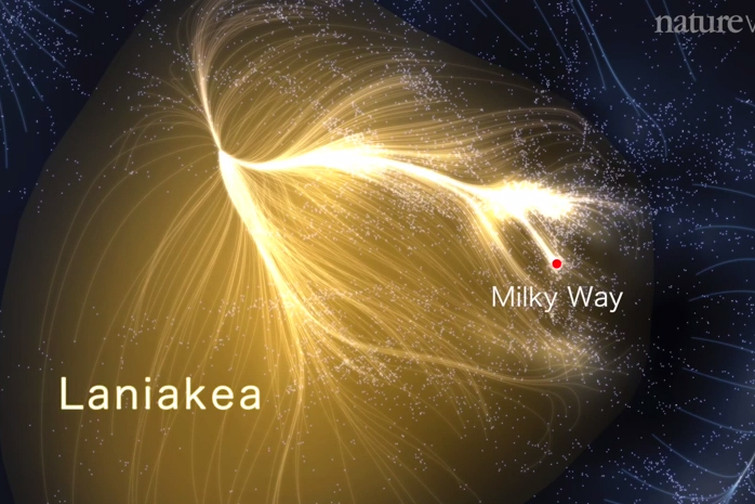
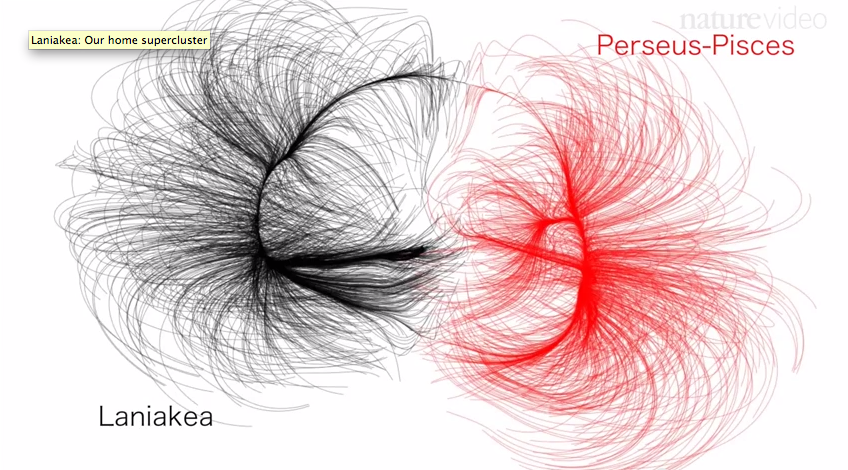
What happens if we zoom out even further? Even Laniakea and Perseus-Pisces are just one small pocket of the much broader universe. That universe consists of both voids and densely packed superclusters of galaxies. It looks something like this:

http://www.vox.com/2...iakea-milky-way

In a fascinating 2014 study for Nature, a team of scientists mapped thousands of galaxies in our immediate vicinity, and discovered that the Milky Way is part of a jaw-droppingly massive "supercluster" of galaxies that they named Laniakea.
What's interesting is that this structure is much bigger than anyone had realized. Astronomers had long grouped the Milky Way, Andromeda, and other galaxies around us in the Virgo Supercluster, which contained some 100 galaxy groups.
It's hard to wrap one's head around how enormous this is. Each of those points of light is an individual galaxy. Each galaxy contains millions, billlions, or even trillions of stars. Oh, and this all is just our little local corner of an even broader universe. There are many other galaxy superclusters out there.
But as Tully and his colleagues found, and as the map above shows, this Virgo Supercluster is just part of a much, much bigger supercluster — Laniakea. (The name, aptly enough, means "immeasurable heavens" in Hawaiian.)
So what happens when we zoom out? The paper notes that Laniakea borders another supercluster known as Perseus-Pisces. And the scientists defined the borders as where the galaxies are consistently diverging:

What happens if we zoom out even further? Even Laniakea and Perseus-Pisces are just one small pocket of the much broader universe. That universe consists of both voids and densely packed superclusters of galaxies. It looks something like this:

http://www.vox.com/2...iakea-milky-way
This is the most detailed map yet of our place in the universe

In a fascinating 2014 study for Nature, a team of scientists mapped thousands of galaxies in our immediate vicinity, and discovered that the Milky Way is part of a jaw-droppingly massive "supercluster" of galaxies that they named Laniakea.
What's interesting is that this structure is much bigger than anyone had realized. Astronomers had long grouped the Milky Way, Andromeda, and other galaxies around us in the Virgo Supercluster, which contained some 100 galaxy groups.
It's hard to wrap one's head around how enormous this is. Each of those points of light is an individual galaxy. Each galaxy contains millions, billlions, or even trillions of stars. Oh, and this all is just our little local corner of an even broader universe. There are many other galaxy superclusters out there.
But as Tully and his colleagues found, and as the map above shows, this Virgo Supercluster is just part of a much, much bigger supercluster — Laniakea. (The name, aptly enough, means "immeasurable heavens" in Hawaiian.)
So what happens when we zoom out? The paper notes that Laniakea borders another supercluster known as Perseus-Pisces. And the scientists defined the borders as where the galaxies are consistently diverging:

What happens if we zoom out even further? Even Laniakea and Perseus-Pisces are just one small pocket of the much broader universe. That universe consists of both voids and densely packed superclusters of galaxies. It looks something like this:

http://www.vox.com/2...iakea-milky-way
To me it looks like we are in some living things body. A universe inside this living thing. On a molecular level. One million years to us is one day to it. And it is just something living inside something else. Etc.
ScienceRocks
Democrat all the way!
- Thread starter
- Banned
- #472
Boeing CST-100: Next-Generation Spaceship
11 February 2015

http://www.space.com...ng-cst-100.html
11 February 2015

The Boeing Co. is one of two companies funded by NASA to develop spacecraft for the International Space Station. In 2014, it received $4.2 billion to continue work on the CST-100 spacecraft that is expected to carry astronauts to the orbiting complex by 2017.
The firm is best known for its large passenger jets. In space, it has performed work on the space shuttle and the ISS, among other projects.
The CST-100 is similar in shape to the Apollo spacecraft, but should have electronics that are half a century more advanced. Its gumdrop shape also looks somewhat like the Orion Crew Exploration Vehicle being constructed right now by Lockheed Martin and its partners. Orion is designed to carry astronauts beyond low Earth orbit.
http://www.space.com...ng-cst-100.html
ScienceRocks
Democrat all the way!
- Thread starter
- Banned
- #473
Kepler-447b: a hot-Jupiter with an extremely grazing transit
We present the radial velocity confirmation of the extrasolar planet Kepler-447b, initially detected as a candidate by the Kepler mission. In this work, we analyze its transit signal and the radial velocity data obtained with the Calar Alto Fiber-fed Echelle spectrograph (CAFE). By simultaneously modeling both datasets, we obtain the orbital and physical properties of the system. According to our results, Kepler-447b is a Jupiter-mass planet ($M_p=1.37^{+0.48}_{-0.46} M_{\rm Jup}$), with an estimated radius of $R_p=1.65^{+0.59}_{-0.56} R_{\rm Jup}$ (uncertainties provided in this work are $3\sigma$ unless specified). This translates into a sub-Jupiter density. The planet revolves every $\sim7.8$ days around a G8V star with detected activity in the Kepler light curve. Kepler-447b transits its host with a large impact parameter ($b=1.076^{+0.112}_{-0.086}$), being one of the few planetary grazing transits confirmed so far and the first in the Kepler large crop of exoplanets. We estimate that only around 20% of the projected planet disk occults the stellar disk. The relatively large uncertainties in the planet radius are due to the large impact parameter and short duration of the transit. Within the transit time interval, we find the presence of large (somehow modulated) outliers during the transit. We propose and analyze different scenarios that could explain these brighter data points, including instrumental effects, additional perturbing bodies, stellar pulsations, rotation of a non-spherical planet, and spot-crossing events. However, short-cadence photometric data (at the 1 minute level) is still needed to unveil the nature of this observational effect.
ScienceRocks
Democrat all the way!
- Thread starter
- Banned
- #474
Astronomers discover rare planet: Kepler-432b is a dense, massive celestial body with extreme seasons
Astronomers discover rare planet Kepler-432b is a dense massive celestial body with extreme seasons -- ScienceDaily
February 12, 2015
Kepler-432b
Density is almost 8...Wow!
Astronomers discover rare planet Kepler-432b is a dense massive celestial body with extreme seasons -- ScienceDaily
February 12, 2015
Two research groups of Heidelberg astronomers have independently of each other discovered a rare planet. The celestial body, called Kepler-432b, is one of the most dense and massive planets known so far. The teams, one led by Mauricio Ortiz of the Centre for Astronomy of Heidelberg University (ZAH) and the other by Simona Ciceri of the Max Planck Institute for Astronomy (MPIA) in Heidelberg, report that the planet has six times the mass of Jupiter, but about the same size. The shape and the size of its orbit are also unusual for a planet like Kepler-432b that is revolving around a giant star. In less than 200 million years, this "red giant" will most likely swallow up the planet.
The results of this research were published in Astronomy & Astrophysics.
"The majority of known planets moving around giant stars have large and circular orbits. With its small and highly elongated orbit, Kepler-432b is a real 'maverick' among planets of this type," says Dr. Davide Gandolfi from the state observatory Königstuhl, which is part of the Centre for Astronomy. Dr. Gandolfi is a member of the research group that discovered the planet. He explains that the star around which Kepler-432b is orbiting has already exhausted the nuclear fuel in its core and is gradually expanding. Its radius is already four times that of our Sun and it will get even larger in the future. As the star is reddish in colour, astronomers call it a "red giant."
The orbit brings Kepler-432b incredibly close to its host star at some times and much farther away at others, thus creating enormous temperature differences over the course of the planet's year, which corresponds to 52 Earth days. "During the winter season, the temperature on Kepler-432b is roughly 500 degrees Celsius. In the short summer season, it can increase to nearly 1,000 degrees Celsius," states astronomer Dr. Sabine Reffert from the state observatory Königstuhl. Kepler-432b was previously identified as a transiting planet candidate by the NASA Kepler satellite mission. From the vantage point of Earth, a transiting planet passes in front of its host star, periodically dimming the received stellar light.
Kepler-432b
Density is almost 8...Wow!
Last edited:
ScienceRocks
Democrat all the way!
- Thread starter
- Banned
- #475
To me it looks like we are in some living things body. A universe inside this living thing. On a molecular level. One million years to us is one day to it. And it is just something living inside something else. Etc.
I was sitting there looking at this yesterday and thought it was exactly this. Wouldn't it be amazing if it was so?
ScienceRocks
Democrat all the way!
- Thread starter
- Banned
- #476
IXV Spaceplane successfully returns to Earth after ambitious Re-Entry Test
http://www.spaceflight101.com/ixv-sp...ntry-test.html
http://www.spaceflight101.com/ixv-sp...ntry-test.html
ESA’s Intermediate Experimental Vehicle successfully made a trip into space and back on Wednesday, being lofted on a sub-orbital trajectory by a Vega launch vehicle to complete half a lap around planet Earth to demonstrate re-entry technologies to pave the way for the development of future re-entry vehicles such as sample return craft, recoverable space-experiment platforms and reusable launch vehicles.
The IXV spaceplane made a thundering blastoff atop its Vega launcher at 13:40 UTC on Wednesday enjoying a flawless 18-minute ride on the all-solid fueled rocket and its liquid-fueled upper module. Being dropped off in a sub-orbital trajectory, IXV began its journey taking it around the planet, passing a maximum altitude of 413 Kilometers to set up re-entry over the Pacific Ocean where a recovery ship was stationed to retrieve the landed vehicle.
This re-entry was set up to represent an orbital re-entry in both speed and entry angle to validate the thermal protection system of the lifting-body IXV spacecraft as well as its control system consisting of steering flaps and thrusters, but no wings. Splashdown was confirmed at 15:19 UTC, marking the successful completion of IXV’s mission leading into months of data analysis.
The main elements that are demonstrated by IXV include the development of a system capable of returning from Low Earth Orbit with a lifting system that is capable of reaching a large down range distance with significant cross-range capability using a combination of rockets and aerosurfaces. The IXV spacecraft is 5 meters long, 2.2 meters wide and 1.5 meters high with a launch mass of 1,845 Kilograms and a lift-to-drag-ratio of 0.7.
ScienceRocks
Democrat all the way!
- Thread starter
- Banned
- #477
The View from New Horizons: A Full Day on Pluto-Charon
Request Rejected
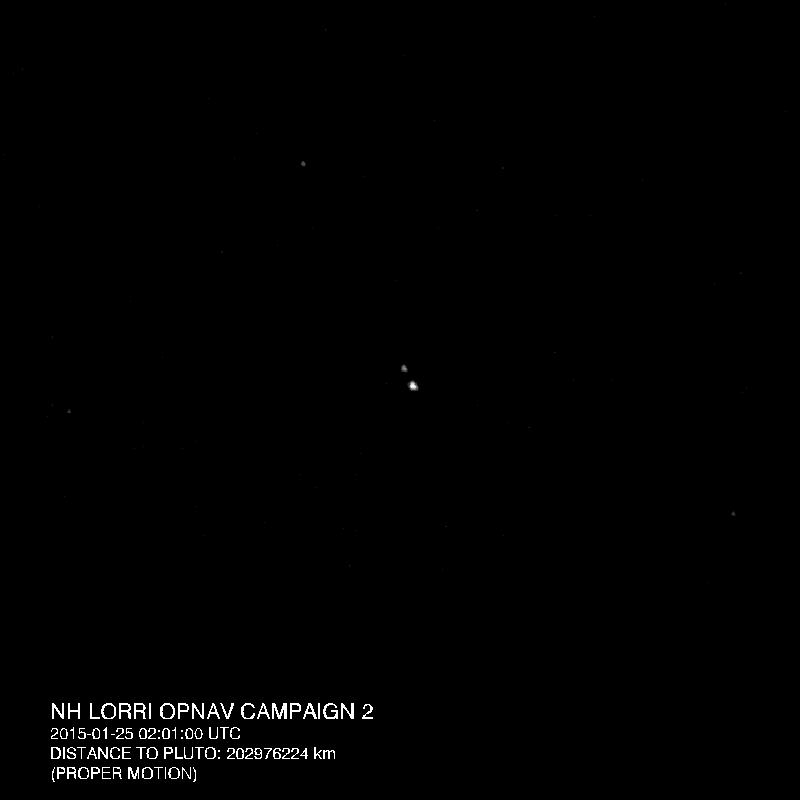
T
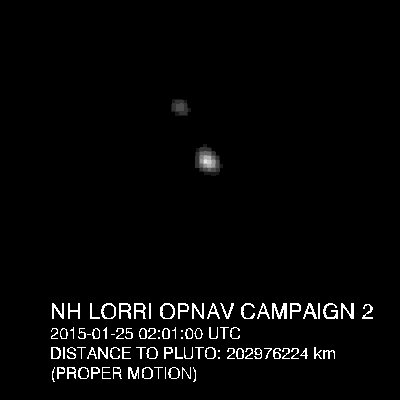
Image credits: NASA/Johns Hopkins University Applied Physics Laboratory/Southwest Research Institute.
Request Rejected

T
his time-lapse “movie” of Pluto and its largest moon, Charon, was recently shot at record-setting distances with the Long-Range Reconnaissance Imager (LORRI) on NASA’s New Horizons spacecraft. The movie was made over about a week, from Jan. 25-31, 2015. It was taken as part of the mission’s second optical navigation (“OpNav”) campaign to better refine the locations of Pluto and Charon in preparation for the spacecraft’s close encounter with the small planet and its five moons on July 14, 2015.
Pluto and Charon were observed for an entire rotation of each body; a “day” on Pluto and Charon is 6.4 Earth days. The first of the images was taken when New Horizons was about 3 billion miles from Earth, but just 126 million miles (203 million kilometers) from Pluto – about 30% farther than Earth’s distance from the Sun. The last frame came 6½ days later, with New Horizons more than 5 million miles (8 million kilometers) closer.
The wobble easily visible in Pluto’s motion, as Charon orbits, is due to the gravity of Charon, which is about one-eighth as massive as Pluto and about the size of Texas.
Faint stars can be seen in background of these images. Each frame had an exposure time of one-tenth of a second, too short to see Pluto’s smaller, much fainter moons. New Horizons is still too far from Pluto and its moons to resolve surface features.

The Pluto-Charon Dance: This close up look at Pluto and Charon, taken as part of the mission’s latest optical navigation (“OpNav”) campaign from Jan. 25-31, 2015, comes from the Long Range Reconnaissance Imager (LORRI) on NASA;s New Horizons spacecraft.
The time-lapse frames in this movie were magnified four times to make it easier to see Pluto and Charon orbit around their barycenter, a mutual point above Pluto’s surface where Pluto and Charon’s gravity cancels out – this is why Pluto appears to “wobble” in space. Charon orbits approximately 11,200 miles (about 18,000 kilometers) above Pluto’s surface.
Each frame had an exposure time of one-tenth of a second, too short to see Pluto’s smaller, much fainter moons.
"These images allow the New Horizons navigators to refine the positions of Pluto and Charon, and they have the additional benefit of allowing the mission scientists to study the variations in brightness of Pluto and Charon as they rotate, providing a preview of what to expect during the close encounter in July," says Alan Stern, the New Horizons principal investigator from the Southwest Research Institute in Boulder, Colorado.
The Johns Hopkins University Applied Physics Laboratory manages the New Horizons mission for NASA's Science Mission Directorate in Washington. Alan Stern, of the Southwest Research Institute (SwRI), headquartered in San Antonio, is the principal investigator and leads the mission. SwRI leads the science team, payload operations, and encounter science planning. New Horizons is part of the New Frontiers Program managed by NASA's Marshall Space Flight Center in Huntsville, Alabama. APL designed, built and operates the spacecraft.
Image credits: NASA/Johns Hopkins University Applied Physics Laboratory/Southwest Research Institute.
Last edited:
To me it looks like we are in some living things body. A universe inside this living thing. On a molecular level. One million years to us is one day to it. And it is just something living inside something else. Etc.
I was sitting there looking at this yesterday and thought it was exactly this. Wouldn't it be amazing if it was so?
It looks like when they show us DNA up close on a molecular level. The universe does look like a living thing. And when we look at a drop of water its like a mini city in there.
It is truly incomprehensible. All I know is this little planet and sun are going to die someday and I want humans to live forever.
Its funny religious people are worried about themselves living forever and I'm more concerned about the human race.
If we can clone humans can we clone fish chicken and cows? Would water be a problem? Is space cold because then we can probably figure out how to make water from ice?
What are some of the hurdles to leaving our solar system?
mamooth
Diamond Member
Does everyone understand how many light years away those stars are? They could actually not even really be there anymore. The light we see is 5 billion years old. It took 5 billion years for that light to reach earth. For all we know they died out 4 or 3 or 2 or 1 billion years ago.
Don't quote me on the exact numbers.
Similar threads
- Replies
- 5
- Views
- 604
- Replies
- 0
- Views
- 156
- Replies
- 42
- Views
- 3K
Latest Discussions
- Replies
- 31
- Views
- 101
- Replies
- 10
- Views
- 76
- Replies
- 14
- Views
- 63
Forum List
-
-
-
-
-
Political Satire 8873
-
-
-
-
-
-
-
-
-
-
-
-
-
-
-
-
-
-
-
ObamaCare 781
-
-
-
-
-
-
-
-
-
-
-
Member Usernotes 492
-
-
-
-
-
-
-
-
-
-
